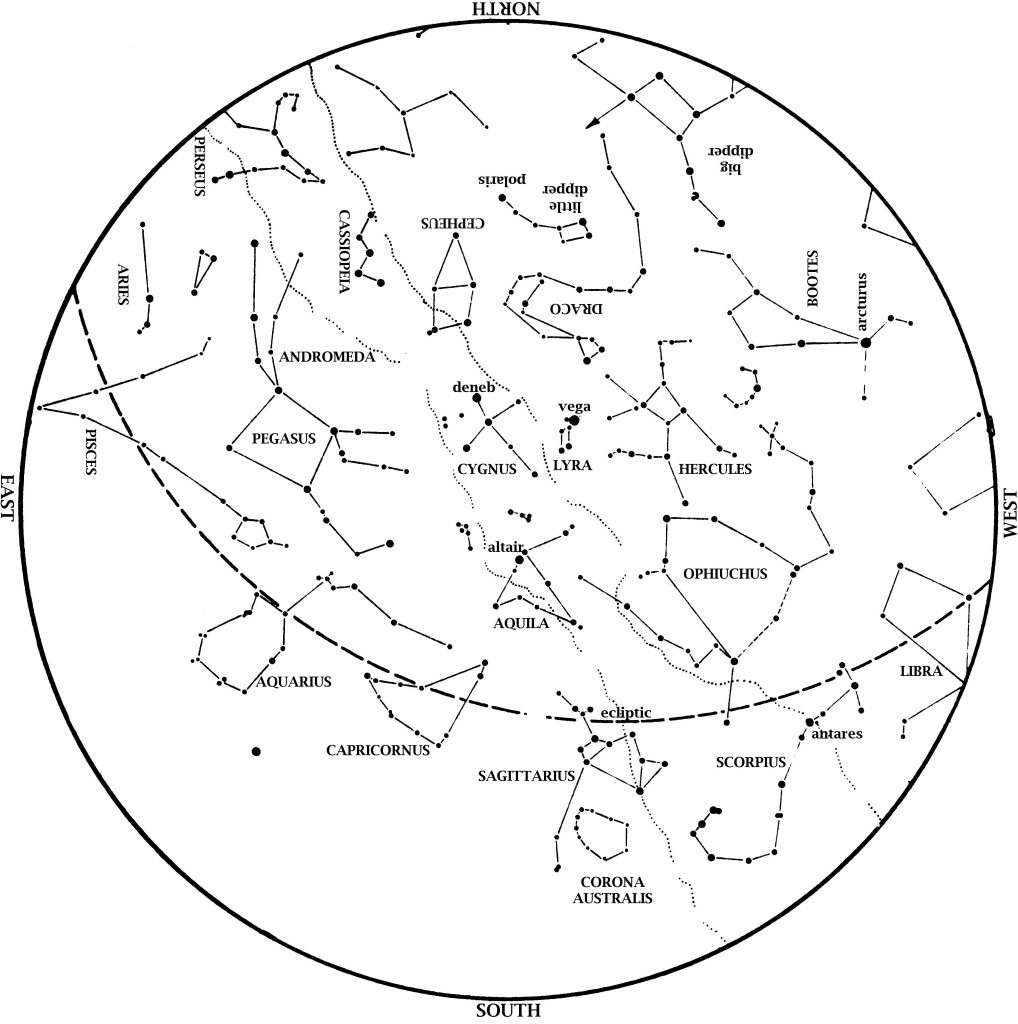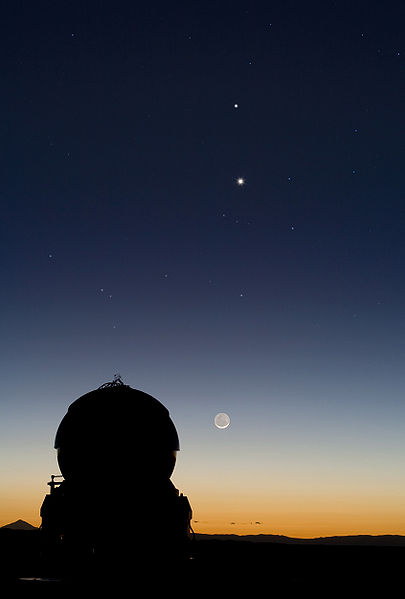
This star map shows the Houston sky at 10 pm CDT on September 1, 9 pm CDT on September 15, and 8 pm CDT on September 30. To use the map, put the direction you are facing at the bottom.
The Summer Triangle is overhead. This consists of the brightest stars in Cygnus, Lyra, and Aquila. Scorpius, the Scorpion, is in the southwest, with the ‘teapot’ of Sagittarius to his left. Saturn is between these two constellations. From the Big Dipper’s handle, ‘arc to Arcturus’ in the west. The Great Square of Pegasus is high in the east at dusk, heralding the coming autumn.
What Our Celestial Neighbors Are Up To

This Glass Lantern Slide is taken from a large collection that documents the work of Grubb Parsons Ltd at their workshop in Walkergate, Newcastle upon Tyne. It was here that Grubb Parsons Ltd manufactured Telescopic and Astronomical equipment for companies and observatories world wide. Source: Wikimedia Commons.
Jupiter is now lower in the west southwest, setting in twilight by the end of the month. September 2017 is the last month to observe it in the evening for a while; next month we lose it in the Sun’s glare.
Saturn is well placed for evening viewing, in the south southwest to the left of reddish Antares at dusk. Saturn won’t be nearly as bright as Jupiter, but easily outshines the stars right near it.
Venus remains a brilliant morning star this month. Look in the east at dawn. Venus outshines everything in the sky except the Sun and the Moon.
Mars begins to emerge from the Sun’s glare and into the morning sky this month. If you have a clear eastern horizon, you can watch Mercury pass within 0.06 degrees of Mars right before dawn on the 16th. The pair is only 10 degrees high as dawn begins, however.
Moon Phases in September 2017:

Conjunction (astronomy) of Mercury (planet) and Venus, align above the Moon, at the Paranal Observatory. Source: Wikimedia Commons.
Full Sept. 6, 2:02 a.m. Last Quarter Sept. 13, 1:24 a.m.
New Sept. 20, 12:29 a.m. 1st Quarter Sept. 27, 9:53 p.m.
Sky Events This Month

While in reality the Earth goes in an orbit around the Sun, it seems from the Earth that the Sun moves over the ecliptic (red) on the celestial dome. When the Sun seems to pass through the vernal equinox (longitude 0°), the longitude of the Earth itself is 180° longitude. Source: Wikimedia Commons.
At 3:02 pm on Friday, September 22, the Sun is directly overhead at the equator, shifting southwards. Therefore, this marks the autumnal equinox, one of two days a year when everyone on Earth has the same amount of daylight. Many consider this the ‘official’ start of fall, although the actual arrival of fall weather varies from year to year. Keep in mind that air and water take some time to cool off, so even with the Sun lower in the sky, warm or even hot weather is common for us in September. This is why the fall equinox is much warmer than the spring equinox in March, when the Sun is at a similar height in the sky.
We now see the Sun take a lower path across the sky each day, giving us a little less daylight each day. Beginning at the equinox, night is longer than day for us, and keeps getting longer until the winter solstice at Christmastime. Below the equator, the Sun is taking a higher path across the sky each day, with day becoming longer than night as of September 22. For them, this is the spring equinox.
You may have heard that an asteroid called ‘Florence’ passed close by the Earth early on September 1, 2017. But ‘close’ takes on a new meaning when it comes to space, as the asteroid in fact passed 4.4 million miles away, which is over 18 times the Earth-Moon distance.
Due to flooding from Hurricane Harvey, the George Observatory is closed until at least October 4.
Clear Skies!





